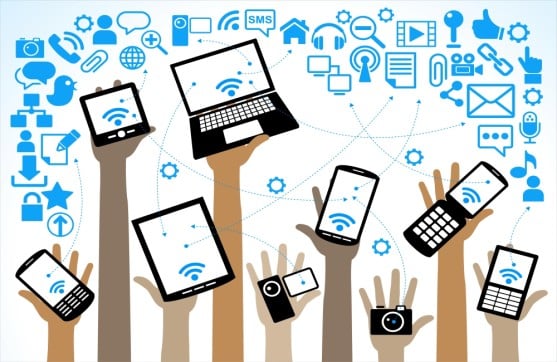
Technology is everywhere--entwined in almost every part of our culture. It affects how we live, work, play, and most importantly learn. With mobile and other wireless devices like the IoT becoming an increasing requirement across every industry today, it only makes sense that our schools are also effectively deploying mobile technology in the classroom. However, for many schools, implementing the latest technology is a difficult strategy to navigate.
There are two main reasons for this:
- Schools are on the fence about the use of certain mobile devices; thinking they're more a burden than a strategic learning tool.
- Schools want to deploy mobile devices but their WiFi networks are not capable of properly supporting the technology
In both cases it's a lose lose situation for everyone involved, especially the students.
To help your school confidently make the decision to embrace mobile technology in the classroom, we've put together a list of 10 reasons why it will benefit your students.
Then, we've outlined how your school can make sure it's ready to actually support those new/added devices.
1) Prepares Students for their Future Careers
If used correctly, mobile devices and the applications they support, will help prepare students for their future careers.
2) Helps to Support Different Learning Styles
Integrating technology into the classroom is an effective way to connect with students of all learning styles.
3) Collaboration
It gives students the opportunity to enhance the interaction with their classmates and instructors by encouraging collaboration.
4) Improves Digital Citizenship
Using technology in the classroom gives teachers and other faculty members the opportunity to develop their student's digital citizenship skills. It's one thing to use mobile devices, it's a completely other thing to know how to use them correctly and responsibly.
5) Helps Students Stay Engaged
Most students today have been using mobile devices like tablets and smartphones to play and learn since they could crawl. So it only seems logical to align today's classrooms with the way that your students want and are used to learning.
6) Enhances the Learning Experience
Combining new tech like VR (virtual reality) with traditional classroom instruction is one example of how the introduction of new technology can enhance the learning experience and create new opportunities.
7) Improves Access to Information
When mobile technology is readily available and performing correctly in the classroom, students are able to access the most up-to-date information quicker and easier than ever before.
8) The Traditional Passive Learning Model is Broken
With technology in the classroom the teacher becomes the encourager, adviser, and coach.
9) Technology Helps Students be More Responsible
Owning your own device or borrowing the school's devices gives students the opportunity to improve their decision making skills as well as taking ownership of a valuable (and often times expensive) device. Again, this needs to be complemented by proper digital citizenship training to see the best results.
10) Technology Transforms the Learning Experience
Students have access to an incredible amount of new opportunities. From learning how to code to learning how to better collaborate across teams and with their instructors--technology empowers students to be more creative and be more connected. New tech has super-charged how we learn today.
If your school is still debating how technology can benefit your students, teachers and administrators, I hate to break it to you, but the future of education is already here and you're missing an unbelievable amount of opportunities.
How to Support Technology in the Classroom
One of the biggest mistakes schools make when deploying or allowing new devices onto their campus and into their classrooms, is by not making sure their network infrastructure is up-to-date and/or sufficient enough to properly support their end-users.
We've seen numerous situations where schools have bought and deployed new tablets or new laptops, only to find that nothing worked because their Wi-Fi network couldn't support the new devices.
With tight budgets you can't afford to buy new devices and have them not work; you need to get it right the first time.
Having a secure WiFi network is what makes using new mobile devices possible. Yes, wireless is a specialized skill and yes they're not cheap, but they're also more attainable than you might think.
After engineering and deploying more than 1000+ wireless systems over the last 11 years, we've learned a lot about what should work and what actually does work.
A few of the main takeaways are:
- Your WiFi system needs to always align with the devices that are connecting to it
- Technical resources are expensive and hard to find
- User expectations are higher than ever
- Everything is constantly changing (devices, applications, how we use WiFi, device numbers, number users, even the physical environment)
What makes this especially challenging for schools is that WiFi networks today only have a useful shelf-life of between three to four years at the very best.
Knowing that traditionally, wireless networks cost a lot of money to design, deploy and manage, how do schools with almost no available budget get what they need?
Using network subscription software, your school can have the exact wireless system it needs to support any technology plan it wants to implement. Whether it's new tablets as part of a 1:1 program or BYOD, network subscriptions enables schools of any size to successfully embrace technology and the mobile devices their students want and need.
There are a variety of benefits, including:
- Flexible payment options including 100% OPEX.
- Scalability to grow with your needs up or down
- Guarantees you always have the latest system in place
- Allows you to prioritize your budget towards other mission-critical projects
- Quick and easy all digital experience






